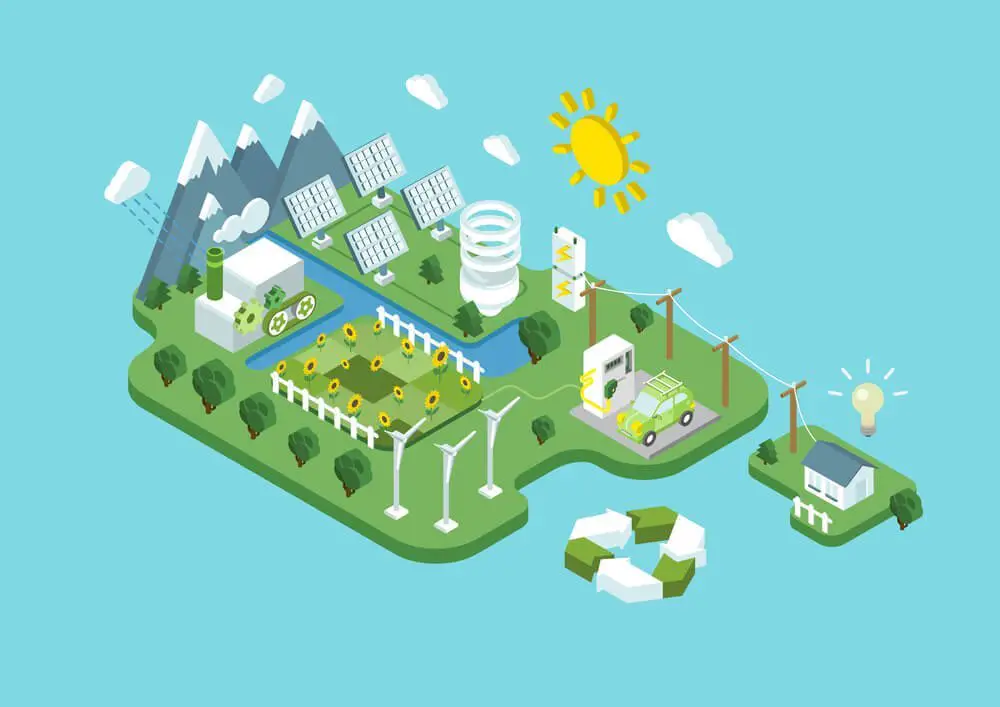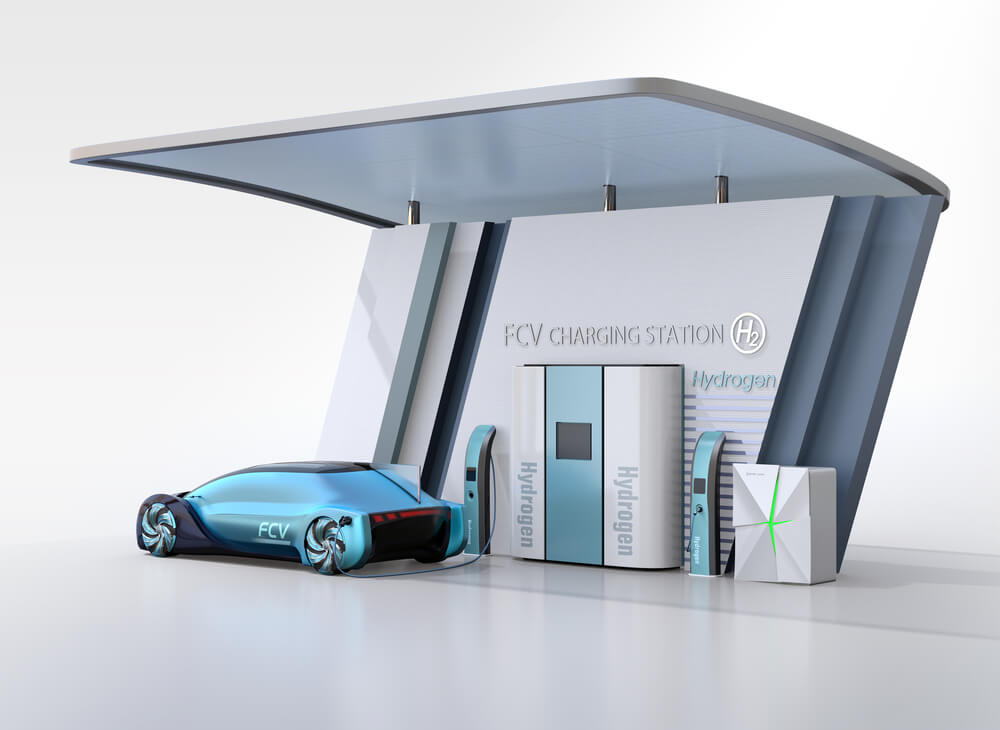The cost of implementing renewable energy has reduced drastically over the last decades.
However, many people still believe that fossil fuels produce cheaper power.
Comparatively, between renewable and non-renewable energy sources, which is cheaper? I’ll answer that!
Today, wind and solar farms produce lower-cost electricity than coal which many people believed to be the cheapest power source.
Renewable energy is now the most preferred energy source from the business point of view, regardless of people’s opinion of future climate change.
Companies that use solar energy or power generation tend to achieve lower electricity loss compared to those dependent on power grids.
Residents are also not left out in the renewable energy benefits, considering the high fees on electricity bills.
- Renewable Energy Cost Reduction Around The World
- Cost Of Fossil Fuel Generation – The Reality
- Other Cost Advantage Of Renewable Energy
- How Renewable Energy Has Affected The Electric Industry?
- How Recent Tech Surge Can Boost Renewable Energy Sources
- Are Renewable Energy Sources Relatively Cheaper Than Non-renewables?
Renewable Energy Cost Reduction Around The World
According to a report from the International Renewable Energy Agency (IREA), virtually all renewable energy costs have been reduced since 2018.
For example, the cost of wind and solar energy has been reduced by 13%, the cost of hydroelectricity by 11%, and biomass power by 14%.
Cost Of Fossil Fuel Generation – The Reality
Whenever renewable and non-renewable energy is placed on the same comparison scale, the cost comparison has always been unfair.
This was mainly because people compare new renewable energy projects with old fossil projects.
However, even the most recent Renewable energy projects still face financial burden due to the increase in kilo-hour price.
Furthermore, most power plants powered by fossil fuels are already old which means the financial investment has been covered decades ago with the ROI already obtained.
When the comparison is on the ground of recent renewable and new fossil fuel generation, then the comparison tilts in favor of renewable energy.
There are now wind and solar farms with lower kilowatt-hour prices than the typical coal power plants.
The cheapest cost of coal power falls within the 3-4 cents per kilowatt-hour range but we’ve seen wind and solar power projects fall below the 3 cents KWH range.
Most cheaper fossil fuel power plants are usually close to the end of their service span.
Candidly, when it comes to new generation projects, renewable sources take generally the forefront.
Also, remember that governments and businesses are opening up awareness to the environment, and organizations that use unclean energy sources can have their reputation to joke with.
Other Cost Advantage Of Renewable Energy
Not only do clean energy sources have a low electricity cost, but they’re also stable.
That’s a massive advantage of renewable power sources.
For instance, sunlight follows a preset pattern.
Rainfall and wind depend on the local climate.
While drought might affect the hydroelectric power plants, wind and sunlight availability will never change over time or in the future.
Because generating renewable energy rely on stable parameters, the cost of electricity will remain stable for a long time — only the maintenance matters.
Comparatively, the price of fossil fuels is unstable because their supply is geopolitical and economically reliant.
For example, a power network that depends on a gas turbine for energy will experience an energy supply fluctuation because of the price fluctuation in the gas market.
And again, on the good side, renewable energy sources already have a stable maintenance cost, because of their inputs which are free in most cases.

How Renewable Energy Has Affected The Electric Industry?
For decades, power companies continue to experience stagnancy in their business models.
Although there are sophistication in the technical process, the operation can be typically summarized below:
Power plants control electricity production, which energy companies (in some cases private generators) own and control.
Energy companies deliver energy to homes and offices with the transmission and distribution service.
Companies measure each user’s consumption, and estimated bills are calculated based on the corresponding tariff.
The good news is that renewable energy has successfully changed the face of this business model.
For instance, residence and commercials can utilize solar power energy and other techs, switching roles between generators and consumers.
For decades, power grids have had their electricity flow in a single direction. But, today, they are now in multiple directions.
While renewable energy sources are the cheapest and have the cleanest electricity, they also encounter a few technical issues.
For instance, electricity production in wind turbines and solar panels varies and depends on specific external factors.
While power companies tend to manage consumption variability, renewable sources have inspired variability in generations too.
Unlike before, fossil fuels have lost the price advantage they had over clean energy while maintaining their high environmental footprint.
Nevertheless, fossil fuels still maintain their key benefits: the ability to produce stable, on-demand electricity.
Solar panels, wind turbines – neither of these can work efficiently without wind. That’s exceptional to conventional power plants that won’t stop operation as long as fuel remains intact.
This doesn’t affect hydroelectricity because you can store water in a reservoir for power generation when needed.
On the flip side, hydropower is less favorable when it comes to site conditions, less versatile than solar panels and wind turbines.
In addition, the clean power industry has better energy storage ability, mainly because it’s devoid of the limitations of wind turbines and solar panels.
Lead-acid batteries have been around for a while, however, their short life span and low efficiency have been a major turn-off.
Lithium-ion batteries are slightly better, mainly because of their high efficiency and high response speed – an essential requirement in the electricity industry.
The high price limitation on batteries remains intact, but a recent IRENA (International Renewable Energy Agency) research predicted a slash in price up to 60% by 2030.
How Recent Tech Surge Can Boost Renewable Energy Sources
Emerging technologies like blockchains and IOT can synergize with renewable generation.
And these technologies can improve how people value renewable energy.
Blockchain can be potentially applicable in energy trade and energy accountability.
The technology can become an aspect of the blockchain platform where users of power grids can make energy transactions for free.
Residents and offices with excess energy will become energy producers.
Because blockchain monitors transactions, it can help old groups of consumers liable to their energy use.
Are Renewable Energy Sources Relatively Cheaper Than Non-renewables?
Many researchers concluded that, at the end of the day, renewable energy is relatively more budget-friendly than non-renewable energy with solar and wind energy making it the most cost-competitive.
The cost of wind power around 2017 was between $40-$69 per megawatt-hour.
High-end solar goes for between $43-$53/MWh. So .comparatively, the cost of energy for natural gas plants goes around $42-78 WMh.
Coal Power is around $60//wMh.
IREA has reported a periodic reduction in renewable energy costs.
The report also noted the significant reduction in PV panel prices with over 80% downsizing.
And these prices continue to drop.
Prices of wind turbines have also dropped to about 50% within a similar time frame.
This price decline has resulted in the globally lower prices of wind power.
While renewable energy continues to grow, it still requires additional initial investment compared to nonrenewable energy.





